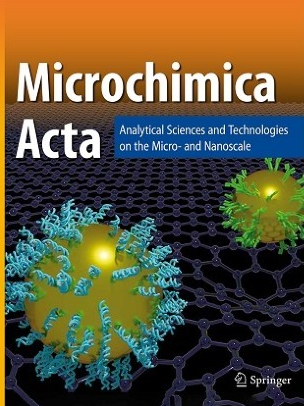Ratiometric fluorescence quantification of folic acid utilizing D-penicillamine-based carbon dots in conjunction with glutathione S-transferase-Au nanoclusters
Abstract
A novel ratiometric fluorescent nanohybrid probe was constructed for sensitive and selective determination of folic acid (FA) based on blue D-penicillamine-based carbon dots (CDs) and red glutathione S-transferase-Au nanoclusters (GST-AuNCs). Upon the excitation of 380 nm, the obtained CDs-NCs possessed two distinct emission peaks at 465 and 665 nm. The fluorescence intensity at 465 nm was incrementally enhanced with the addition of FA attributed to the hydrogen bonds formation, while the fluorescence intensity at 665 nm was quenched caused by the electronic interaction and the inner filter effects. The fluorescence intensity ratio (I465/I665) exhibited good linear correlation with FA concentrations in the range 10∼90 μM, and the limit of detection (LOD) was 0.63 μM. Notably, the corresponding fluorescent color changed from red to blue, which could be distinguished by naked eyes. On account of the excellent biocompatibility, the CDs-NCs were further successfully used for bioimaging and intracellular FA detection. Furthermore, the real sample analyses confirmed that the proposed nanoprobe could be expanded as a versatile platform for FA detection in practical applications.
Graphical abstract


 求助内容:
求助内容: 应助结果提醒方式:
应助结果提醒方式:


